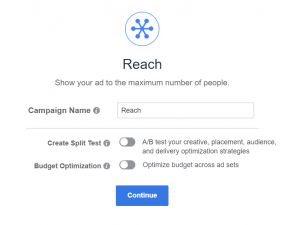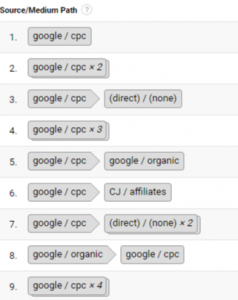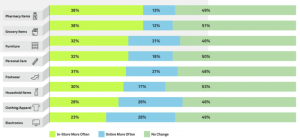
In October, Google started rolling out a new update to its search algorithm. Penguin 3 is part of the ongoing effort to reduce spam and other low-quality content on the web. While only a small percentage of websites (the worst offenders) were drastically affected, many more may have lost a little ground, and with it, valuable traffic.
Web search results are constant flux, skewed by new competitors, industry terms or buzzwords, spikes in traffic, the quality of inbound links, reviews, and even social media. How important is staying on top? Advertising network Chitika shows Google positioning in charts. To sum up their findings, 91.5% of all web traffic comes from the first page, and the higher you are on the page, the more hits your site will get. If you’re on page two, 75% of searchers won’t even see your link.
Why Google is hurting you
Google algorithms are complex. Page rankings are determined by more than 200 factors, some of which you can’t control. One important thing to remember is that throughout Google history, every change has had the same goal: To improve the quality of results and reduce spam. The end game is to deliver exactly what people are searching for, high quality, informative answers to their queries.
Naturally, marketers are always looking for a way to game the system.
Content Issues
Content is literally everything you use to communicate with your customers. It includes copy, blog posts, articles, ebooks, whitepapers, social media posts, and even graphics. Everything you put out there should be consistent, informative, high quality, and industry-specific. Opinions and personality on blog posts are fine, but the overall subject matter should relate to your business or your customers in some way. Here are some common content mistakes to improve on your website.
- Stale content. It’s not enough to slap a website up with a few pages and then change nothing for the next 5 years. Google wants fresh, updated content, and so should you.
- Poor quality content. There’s no other way to say it. If your content is crap, Google will smack you down. Every word on your site needs to be well-written, authoritative, and relevant to your industry. If you’re not sure and you don’t have a budget for web content, find an English major and have them check your site for grammar and spelling, at the very least.
- Poor focus. A business blog is significantly different from a personal blog. It is absolutely fine to post about fun things that happen at the office (in fact, it’s entertaining and helps you connect with your customers), but let’s not mention your gall bladder surgery or post random cat videos, ok? Keep the subject matter related to your business, answer your customers’ questions, or discuss industry info or news.
- Keyword stuffing. Using awkward keywords over and over to meet a specified density criteria is SO 2010. Forget keywords and just talk to your customers. If you write about your subject, keywords and related words will just fall into place naturally.
Incoming links
This one is tricky. One tactic used a few years ago by shady marketers that’s now coming back to bite web owners in the butt is seeding links on low-quality sites slapped up for that exact purpose. In the past, the number of incoming links was important, so putting up a hundred one-page sites with a link back to the client site was almost a sure-fire method of gaining market share. Today, it’s the fastest way to find your site in Google Hell.
You can use Google Tools to help identify bad links that might be shooting you in the foot. You’ll need to set up a free Webmaster Tool account and follow the steps to verify your website. To see your inbound links, go to Search Tools > Links to Your Site > More. Under “More” you’ll find “Who Links Most.” Click that and then “Download Latest Links” for a spreadsheet view of what pages are linking to your site.
From there, it’s all detective work. Look for suspicious, low-quality sites, sites completely unrelated to your industry, and spammy links posted in random blog comments (another tactic that used to work and is deadly poison today). The first action to take when you find suspect links is to email the webmaster of the site or blog and ask them to remove the link. Only if all else fails, try Google Disavow Tool. It tells Google that you want nothing to do with this link. But if you have a long list of spammy links you’re only now trying to distance yourself from, it’s obvious you were up to no good in the past.
Checking your blind spot
When you move down in the rankings, your competitors move up. Google struck fear into the hearts of marketers and SEO mavens everywhere with “Keyword Not Provided,” the use of keywords has changed considerably.
Don’t worry. You may not have access to the same depth of keyword knowledge you once had, but one thing you can do is check out your site against your competitors to find out why they are outranking you. RivalIQ allows you to see how your website SEO data stacks up and measures keywords rankings for Twitter, Facebook, LinkedIn, Instagram, YouTube and Google Plus. Using that information, you can figure out what they did right…and what you may have done wrong. What you know, you can fix.
2015 and beyond
Here’s the good news. If your website is filled with quality content and your marketing techniques are completely on the up-and-up, your website will always be Google proof. That said, you can’t rest on your laurels, patting yourself on the back. If you’re on top, your competitors will be working to overtake your position. To retain your stellar ranking, you need to work constantly at improving and updating your website.
Will you be making content changes for 2015?
Beautiful chess game image courtesy of chrisgj6. Graphic created using free tools by Canva
Digital & Social Articles on Business 2 Community
(355)
Report Post






